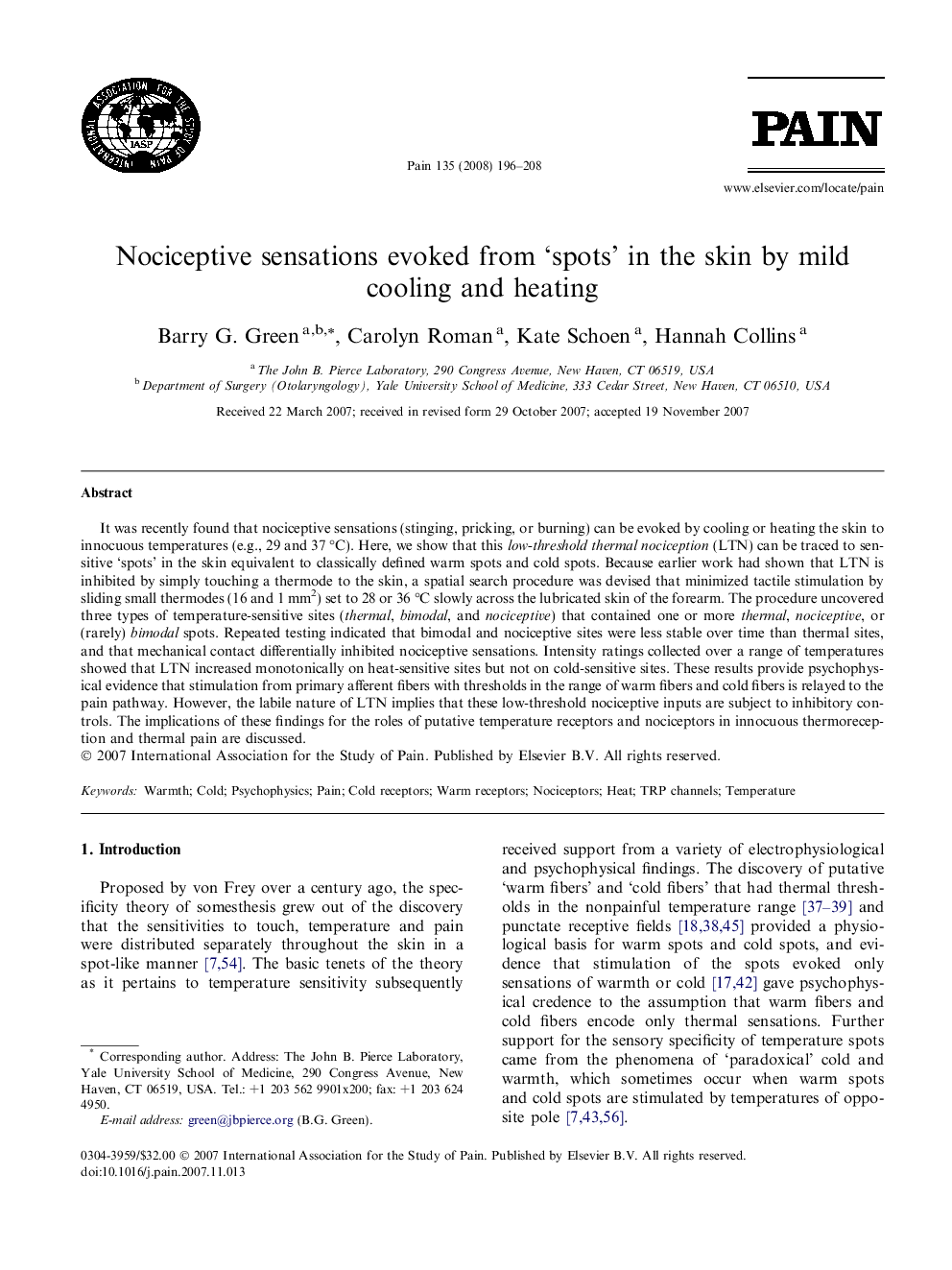| کد مقاله | کد نشریه | سال انتشار | مقاله انگلیسی | نسخه تمام متن |
|---|---|---|---|---|
| 7271097 | 1473248 | 2008 | 13 صفحه PDF | دانلود رایگان |
عنوان انگلیسی مقاله ISI
Nociceptive sensations evoked from 'spots' in the skin by mild cooling and heating
دانلود مقاله + سفارش ترجمه
دانلود مقاله ISI انگلیسی
رایگان برای ایرانیان
کلمات کلیدی
موضوعات مرتبط
علوم زیستی و بیوفناوری
علم عصب شناسی
علوم اعصاب سلولی و مولکولی
پیش نمایش صفحه اول مقاله

چکیده انگلیسی
It was recently found that nociceptive sensations (stinging, pricking, or burning) can be evoked by cooling or heating the skin to innocuous temperatures (e.g., 29 and 37 °C). Here, we show that this low-threshold thermal nociception (LTN) can be traced to sensitive 'spots' in the skin equivalent to classically defined warm spots and cold spots. Because earlier work had shown that LTN is inhibited by simply touching a thermode to the skin, a spatial search procedure was devised that minimized tactile stimulation by sliding small thermodes (16 and 1 mm2) set to 28 or 36 °C slowly across the lubricated skin of the forearm. The procedure uncovered three types of temperature-sensitive sites (thermal, bimodal, and nociceptive) that contained one or more thermal, nociceptive, or (rarely) bimodal spots. Repeated testing indicated that bimodal and nociceptive sites were less stable over time than thermal sites, and that mechanical contact differentially inhibited nociceptive sensations. Intensity ratings collected over a range of temperatures showed that LTN increased monotonically on heat-sensitive sites but not on cold-sensitive sites. These results provide psychophysical evidence that stimulation from primary afferent fibers with thresholds in the range of warm fibers and cold fibers is relayed to the pain pathway. However, the labile nature of LTN implies that these low-threshold nociceptive inputs are subject to inhibitory controls. The implications of these findings for the roles of putative temperature receptors and nociceptors in innocuous thermoreception and thermal pain are discussed.
ناشر
Database: Elsevier - ScienceDirect (ساینس دایرکت)
Journal: PAIN® - Volume 135, Issues 1â2, March 2008, Pages 196-208
Journal: PAIN® - Volume 135, Issues 1â2, March 2008, Pages 196-208
نویسندگان
Barry G. Green, Carolyn Roman, Kate Schoen, Hannah Collins,